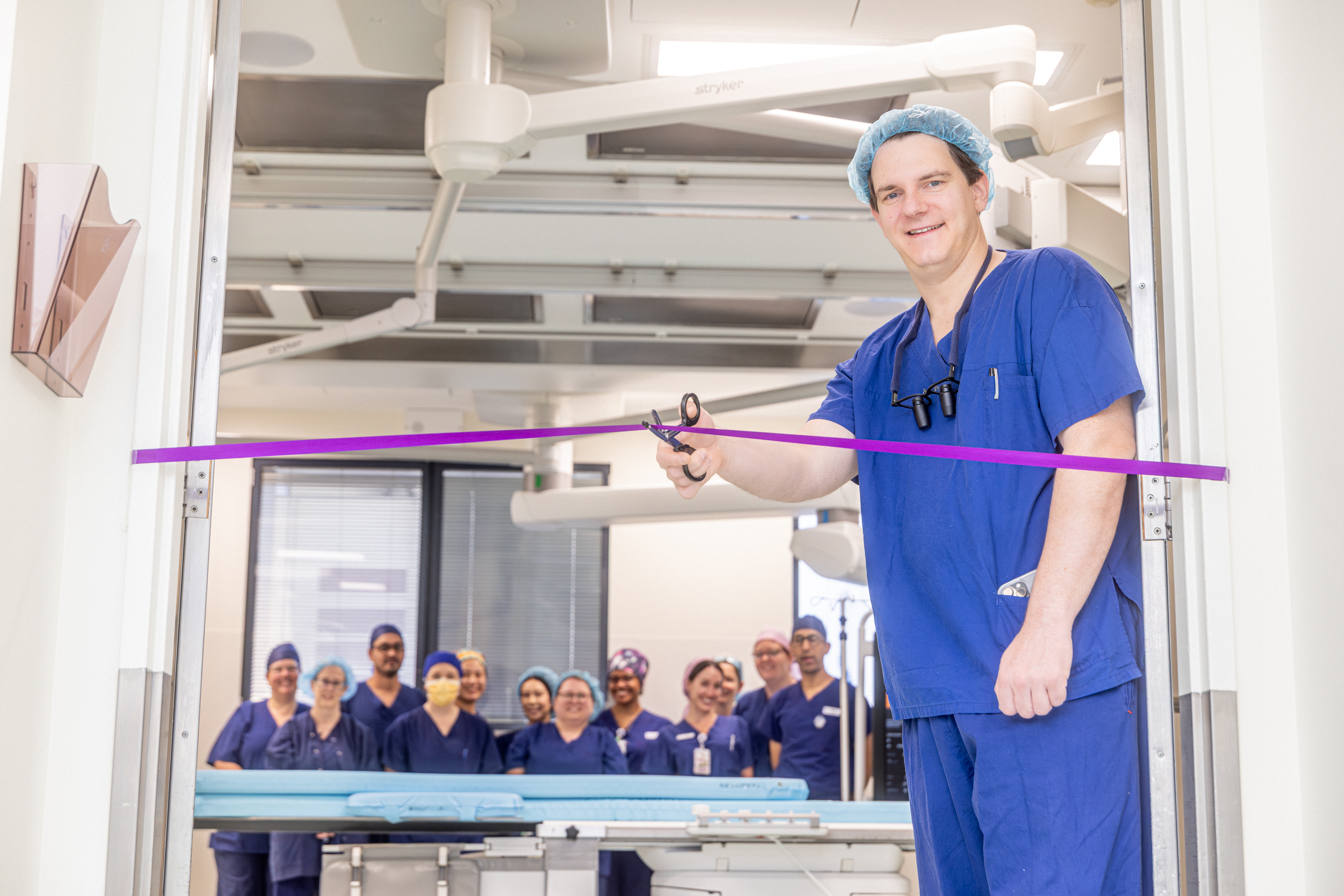New hybrid angiography unit opens
A new hybrid angiography unit is helping transform vascular surgery for patients at St Vincent’s Hospital Melbourne (SVHM).
This innovative technology is a key component of recent upgrades to Theatre 2 that features an improved layout specifically designed to accommodate a high-tech x-ray machine. The new set-up enables surgeons to perform procedures with enhanced precision and efficiency.
The transformation of the space has created a modernised hybrid working environment, supporting both an interventional theatre with real-time 3D imaging and improved navigation, as well as a traditional surgical theatre.
The new equipment, installed in early April, is a medical imaging device used to visualise blood vessels throughout a patient’s body during various vascular procedures, including treatments for peripheral artery disease, aneurysm and vascular malformations.
“This is a state-of-the-art technology and facility that will allow us to provide the very best of patient care, both now and into the future,” said Dr Raoul Mayer, a vascular surgeon at St Vincent’s Hospital Melbourne.

Above: Raoul Mayer and members from SVHM’s surgical team
Building on a legacy of innovative care
SVHM was the first public hospital in Victoria to have a hybrid-style theatre when the original angiography unit was installed in 2010. This pioneering move positioned the hospital’s vascular unit at the forefront of advances in endovascular aneurysm repair techniques.
Over time, the existing unit has been surpassed by this new technology that offers improved imaging quality and advanced imaging features. The upgraded theatre layout ensures better surgical access and reduces radiation exposure for both theatre staff and patients.
“This hybrid system allows us to perform procedures that were traditionally done in the x-ray department and radiology. It combines the full advantages of a traditional theatre with the best, and latest and the greatest x-ray technology, allowing us to precisely plan and execute our procedures,” said Dr Mayer
“For example, when stenting an artery, we can see exactly where to place the stent and navigate through the body to the right spot, ensuring the best possible care at all times.”
The new equipment also includes specific technological features such as vessel mapping and improved surgical efficiency, resulting in faster procedure time, and less time in hospital for patients.
Watch the video below